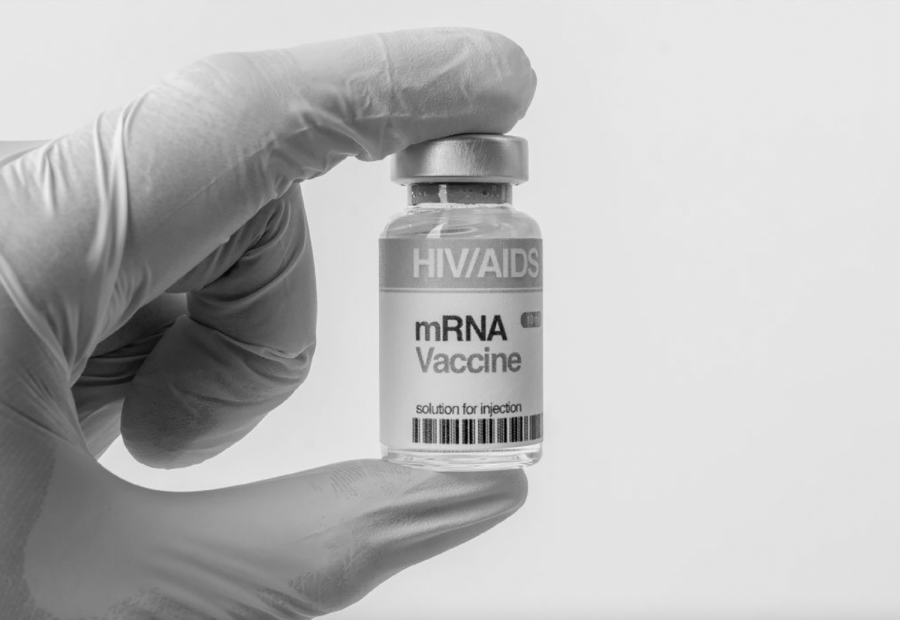FDA greenlights human HIV trials
November 19, 2021
Excision Biotherapeutics, a private company, based out of Philadelphia, Pennsylvania, is developing CRISPR-based therapies to treat infectious diseases. CRISPR treatment has previously been limited to trials on non-human primates. Still, Excision Biotherapeutics has been given the green light to use this technology to conduct human trials to find an effective cure for HIV.
What is CRISPR, and how does it work?
Initially introduced in 2012, CRISPR, or clustered regularly interspaced short palindromic repeats, functions as programmable molecular scissors to disable, repair, or add genetic code.
RiboNucleic Acid (RNA) is the unzipped latter-shaped double helix of the Deoxyribonucleic Acid (DNA) and reads the genetic information within DNA.
CRISPR begins at the RNA and finds a spot in the nucleus of the desired cell where editing will take place. CRISPR guides Cas9, an enzyme that can cut apart DNA, to the region of DNA where the cut is called for. The Cas9 enzyme snips the DNA at the desired editing region, creating a break in both strands. From there, CRISPR can then repair the break by disabling, fixing the mistake, or inserting a new gene.
This scientific technology is used to program and bind the Cas9 protein found in bacteria to a DNA sequence that is then used to cut out the desired spot. These proteins are used to destroy viral DNA and this technology was utilized for cancer research, COVID-19, and now, HIV.
What is HIV?
HIV attacks and weakens the immune system so that those with the virus cannot effectively fight off diseases. If left untreated, HIV can lead to Acquired Immune Deficiency Syndrome (AIDS). HIV is scientifically proven to have originated from chimpanzees. Scientists believe this transfer occurred when humans hunted chimpanzees that were infected by the Simian immunodeficiency virus (SIV) that then mutated into the HIV-1 strain.
While the human immune system is made to fight disease and infection, the chances of mutation and human transmission become greater when met with new forms of bacteria.
Today, there are four different HIV strains, all of which are believed to be various adaptations of the SIV strain. The first known case of HIV originated in the Democratic Republic of Congo in 1959. However, most people first became aware of HIV in the 1980s when there was an outbreak in the U.S.
While scientists and communities initially believed HIV could only be transmitted through members of the LGBTQIA+ community, this harmful myth led to the death of countless virus victims. In reality, anyone can be infected with HIV. The virus is also common among drug users, those experiencing Hemophilia, an inherited bleeding disorder that does not allow blood to clot properly and can be transmitted during pregnancy.
Since the start of the epidemic in the 1920s, nearly 76 million people have been infected by HIV, and 38 million people currently live with it today.
What is the treatment protocol for someone infected with HIV?
While there are treatments to manage HIV, there is no current cure for the illness. However, on Sept. 15, the Food and Drug Administration (FDA) granted Excision Biotherapeutics approval to begin human testing on their CRISPR-based HIV treatment.
Currently, the most effective treatment for HIV is antiretroviral therapy (ART). Those involved with the trial will continue to take this treatment for three months after the one-time dosage of the CRISPR EBT-101 treatment that could potentially stop the mutation of the HIV genome in the body.
The CRISPR trial is volunteer-based and will be used to show that the treatment is safe and effective for those with HIV. This single-dose treatment will cut the HIV genome in several places as it must work around the virus’ ability to adapt quickly.
Scientists are not looking to remove every viral genome of HIV from the body altogether. Their ultimate hope is to have trial participants remain HIV negative after RNA testing so that they may no longer need to continue taking the antiretroviral treatment (ART).
The CRISPR treatment is made to inhibit the virus from reproducing by reducing it to an undetectable level in the body. This would mean that participants would have normal levels of immune cells and would no longer have HIV, making this a functional cure.
The EBT-101 dose has shown a fair amount of success in human cells, mice, and non-human primates. About two-thirds of the mice that were given this treatment were still somewhat affected after the dose, and more than 60 percent of the HIV DNA remained present after treatment in primates.
The Pace Press turned to University students to get their point of view on this exciting new treatment for HIV. University freshman Michelle Crespo-Gonzales stated, “HIV is a serious illness and I think Excision Biotherapeutics is taking great steps towards finding a cure. I think it’s very exciting and could be the end for viruses like HIV entirely.”
Excision Biotherapeutics is not the only company to begin human trials for HIV-related drugs. Moderna and Johnson & Johnson are running human trials on HIV vaccines to prevent the spread of the virus. These scientific breakthroughs could potentially mean the end of HIV for those who suffer and those susceptible.












